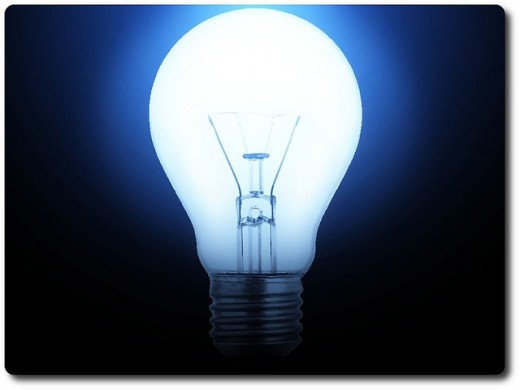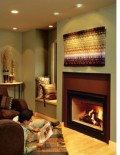Fast and Easy Science Fair Projects: Watt?





Comparing light output and power consumption
Purpose: Determine if a 50-watt light bulb gives off as much light as two 50-watt bulbs.
Overview: Incandescent light bulbs, the kind used in most household lamps, are rated by the amount of power they use, but the amount of light they give off is really the most important thing to know. Light bulbs are rated by the number of "Watts" they use. A watt is a unit of measure of electric power, that is, how much electrical energy is used. It would take the same amount of electrical energy to light one 100-watt bulb as it does to light two 50-watt bulbs, so the cost would also be the same. But, does a 100-watt light bulb give as much light as two 50-watt bulbs?
Hypothesis: Hypothesize that a 100-watt bulb will give off about the same amount of light as two 50-watt light bulbs.
You need:
- an adult (for safety when working with electricity or hot light bulbs)
- camera
- 2 lamps
- 1 hundred-watt light bulb
- 2 fifty-watt light bulbs
- a room that can be made completely dark
- an index card or stiff piece of paper
- dark marker
Procedure: Place two lamps side by side on a small table, dresser, or any object that will hold them in a room that can be made dark. Before plugging the lamps into an electric outlet, screw a 50-watt bulb in each lamp. Be very careful plugging the lamps into the outlet. You can leave the lamp shades on or take them off, but whichever you do, you must do the same when you use the single 100-watt bulb later. If the lamps have different shades, then you must remove both shades.
Fold an index card or small piece of paper in half making a "V" shape. Turn it upside down so it will stand up. On one side, write "1" with a dark marker. On the other side, write "2." Place it on the table, nightstand, or dresser on the side of the room opposite to the lamps. Stand the card so that the 1 is visible.
Turn the lamps on. Stand with your back to the lamps, but be sure that your body is not blocking the light from shining directly on the card on a table or dresser. Face the card and the rest of the room to take a picture. Be sure the camera does not have a flash, or that the flash is turned off. The camera must also be one that does not have an automatic sensor for lighting. Take a picture, focusing on the index card. You may want to set the camera on the table or something to keep it still, and to ensure that the camera will still be in the same position for the next picture. The camera position and everything in the room will remainConstant. The onlyVariablewill be the light bulb(s).
Turn the lamps off. Unplug one of them from the electric outlet, unscrew the 50-watt bulb, and replace it with a 100-watt bulb. Plug the lamp back in and turn it on. Turn the index card around, so the side with "2" on it is showing. Again, stand with your back to the lamp and take a picture with the index card as the focal point.
If you have to send a film away to be developed, write down on a piece of paper that the photo with the #1 on the index card was taken with two 50-watt bulbs, and the one with #2 was taken with one 100-watt bulb. That way you wont have to remember which photo matched which lighting experiment.
Compare the two pictures. Do objexts in the pictures ave about the same brightness or are there differences?
If you can borrow a light meter from a photographer or your school's science teacher, try to measure the amount of light given off by two 50-watt bulbs and compare it to the light given off from one 100-watt bulb.
Results and Conclusion: Write down the results of your experiment. Come to a conclusion about your hypothesis.
Something more:
1. Even if two 50-watt bulbs give off about the same amount of light as one 100-watt bulb, do you think two 50-watt bulbs are better for lighting a room? By "better" we mean that the light is more evenly distributed and less harsh, making it easier to read, work, or play in a room when there are two lights on opposite sides of the room rather than just one real bright one.
2. Audio power (volume) is also measured in watts. Does a stereo sound louder if its two speakers are placed next to each other, or spread far apart?
Related Pages!
- Room for Brightness
Reflected Light Purpose: Show that a room is better lit when the room's walls are painted in bright colors compared to a room where the walls are dark (makes a room safer, (reduces eye fatigue when... - Up to Speed
Acceleration in a bottle Purpose: To show changes in rate of speed. Overview: Acceleration is an increase in speed. Physicists define it as a measure of rate of change of velocity over time. To accelerate... - Smaller is Stronger
Testing tensile strength Purpose: To discover if an object's strength has any relation to its length. Overview: The term tensile strength means how strong something is when it is unsupported; how much... - Bad Manners
Heat conduction and heat sinking Purpose: Is there a way to make something cool more quickly, like a drink that is too hot? Overview: Metal is a good "conductor" of heat. That means it makes an easy...













